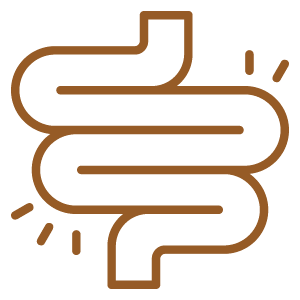Akilen, R., Tsiami, A., Devendra, D., & Robinson, N. (2012). Cinnamon in glycaemic control: Systematic review and meta analysis. Clinical Nutrition, 31(5), 609-615. https://doi.org/10.1016/j.clnu.2012.04.003
Baker, I., Choan, M., & Opara, E. I. (2013). Impact of cooking and digestion, in vitro, on the antioxidant capacity and anti-inflammatory activity of cinnamon, clove and nutmeg. Plant Foods for Human Nutrition, 68(4), 364-369. https://doi.org/10.1007/s11130-013-0379-4
Beejmohun, V., Peytavy-Izard, M., Mignon, C., Muscente-Paque, D., Deplanque, X., Ripoll, C., & Chapal, N. (2014). Acute effect of Ceylon cinnamon extract on postprandial glycemia: Alpha-amylase inhibition, starch tolerance test in rats, and randomized crossover clinical trial in healthy volunteers. BMC Complementary and Alternative Medicine, 14, 351. https://doi.org/10.1186/1472-6882-14-351
Easley, T., & Horne, S. (2016). The modern herbal dispensatory: A medicine-making guide. North Atlantic Books.
European Medicines Agency. (2011). Assessment report on Cinnamomum verum J. S. Presl, cortex and corticis aetheroleum. https://www.ema.europa.eu/en/documents/herbal-report/assessment-report-cinnamomum-verum-j-s-presl-cortex-corticis-aetheroleum_en.pdf
Food Safety and Standards Authority of India. (n.d.). Guidance note on cinnamon (dalchini) and cassia (taj). https://fssai.gov.in/upload/uploadfiles/files/Guidance_Note_Cinnamon_CCASIA_10_03_2014(1).pdf
Gunawardena, D., Karunaweera, N., Lee, S., van der Kooy, F., Harman, D. G., Raju, R., ... & Münch, G. (2015). Anti-inflammatory activity of cinnamon (C. zeylanicum and C. cassia) extracts – identification of E-cinnamaldehyde and o-methoxycinnamaldehyde as the most potent bioactive compounds. Food & Function, 6(3), 910-919. https://doi.org/10.1039/c4fo00680a
Jaafarpour, M., Hatefi, M., Khani, A., & Khajavikhan, J. (2015). Comparative effect of cinnamon and ibuprofen for treatment of primary dysmenorrhea: A randomized double-blind clinical trial. Journal of Clinical & Diagnostic Research, 9(4), QC04-QC07. https://doi.org/10.7860/JCDR/2015/12084.5783
McIntyre, A. (2019). The complete herbal tutor. Aeon.
Oliveira, J. A., da Silva, I. C., Trindade, L. A., Lima, E. O., Carlo, H. L., Cavalcanti, A. L., & de Castro, R. D. (2014). Safety and tolerability of essential oil from Cinnamomum zeylanicum Blume leaves with action on oral candidosis and its effect on the physical properties of the acrylic resin. Evidence-Based Complementary and Alternative Medicine, 2014, Article ID 325670. https://doi.org/10.1155/2014/325670
Ody, P. (1993). The complete medicinal herbal: A practical guide to the healing properties of herbs, with more than 250 remedies for common ailments. DK publishing.
Ranasinghe, P., Pigera, S., Premakumara, G. A., Galappaththy, P., Constantine, G. R., & Katulanda, P. (2013). Medicinal properties of ‘true’ cinnamon (Cinnamomum zeylanicum): A systematic review. BMC Complementary and Alternative Medicine, 13, 275. https://doi.org/10.1186/1472-6882-13-275
Tisserand, R., & Young, R. (2014). Essential oil safety (2nd ed.). Churchill Livingstone.




















